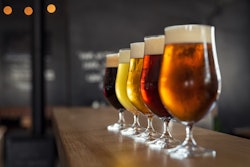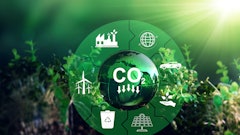
No water means no food and no beverage. It also means none of a myriad of other things used to source food and beverage. Without it, we have little.
Over the past couple decades, the food and beverage sector has shifted from viewing water as a resource to be managed within the manufacturing operation to a critical asset that requires investment across the entire value chain. It is valued as the essential ingredient, and companies have responded by building toward robust water stewardship strategies and investing in sustainable agriculture and green infrastructure to protect it.
Water stewardship as a business imperative
First and foremost, it must be understood that water stewardship is not a corporate social responsibility (CSR) issue. It’s a business issue with bottom-line impact that requires the attention of the c-suite and the board, alike. Getting food and beverage companies to understand this is an important foundation for ensuring water is valued and protected across the supply chains.
A 2019 report titled Feeding Ourselves Thirsty: Tracking Food Company Progress Toward a Water-Smart Future by Ceres noted that the food sector has favorably improved management of water risk in recent years. According to Ceres, one reason for this is that corporate board members are becoming more keenly aware of water issues, and more businesses are putting water efficiency success metrics and goals in place to quantify and measure water-related risks.
As a result, the private sector has an important role to play in “solving” water. To build on progress already being made, corporations must continue to adopt comprehensive water strategies that include cross-sector collaboration, innovation and engagement with entrepreneurs and the public sector, along with more traditional players like non-governmental organizations (NGOs). It starts within each company individually believing that a corporate water strategy isn’t a “nice to have,” but an imperative, a “need to have.”
Sustainable sourcing and agriculture
Another way to ensure water is valued and protected across the supply chain is to implement sustainable sourcing and agricultural practices. This begins at the source.
Take AB InBev for example, a leading brewer with an unrivaled commitment to the environment, farmers and sustainable sourcing. As such, a significant area of focus for the business is how it secures the water for its breweries and operations. The company is also deeply aware that the bulk of its product water footprint is located in the agricultural supply chain.
AB InBev has direct relationships with about 60% of the volume the brewing raw materials the company sources - about 20,000 farmers in 13 countries on five continents. While that doesn’t mean it always buys directly from the farmer, the company does have a close handle on where its product comes from, often right down to the farmer that grew the crop. This is how the global company keeps its supply chain as refined and close knit as possible. And, in doing so, it’s able to work with farmers to understand water risk and how to respond to, and prioritize, water risk mitigation such as improved irrigation efficiency or soil practices to manage water quality. While this can be a slow, tedious process, it’s one that crucial when it comes to proactive supply chain planning and security.
Investing in innovation
Beyond having ground-level relationships with suppliers in order to mitigate and respond to risks, companies can also protect water within, and across, the supply chain by investing in innovation and technology. We’ve seen time and again in recent years that analog solutions to water management are no longer viable to ensure sustainable and resilient operations.
Smart and water-conscious agriculture solutions are on the rise. Artificial intelligence, Internet of Things and remote sensing, to name a few, have an ever-increasing role to play in addressing water risks. Digital tools can provide real-time remote monitoring and control of processes and critical infrastructure. This helps to ensure continuity in service when staff are dispersed, which is the case for many businesses today during the pandemic. They can augment strained resources and mitigate the risks of business interruptions, as well as monitor real time water quality within a watershed.
Start-ups are on the cutting edge of developing solutions to help businesses understand water quality and managing climate impacts, for example.
AB InBev also launched a pilot of blockchain technology to give full field-to-bottle traceability to its beers in supporting the 40% of barley farmers with whom they deal with indirectly. Based on the SettleMint platform, it connects consumers to the supply chain by scanning a QR code on pack to learn about where the barley for their beer was grown.
Whether it’s exploring the latest innovations or investing more broadly and long term in digitalization, the future of the food and beverage supply chain largely hinges on the ability for parties to operate in an interconnected way, and for businesses to be able to holistically see their entire supply networks in a single view (sometimes referred to as a single source of truth). It is only with digital solutions that provide a deep level of visibility across the entire network that food and beverage players can look to a sustainable future, especially at a time of immense uncertainty brought on by the COVID-19 pandemic. That’s in addition to an already long-standing global water crisis where we mustn’t forget that water is finite.
The value of water to a food and beverage company can’t be overstated, not just in manufacturing operations but in their upstream supply chain and in the communities and watersheds in which they operate. Water risks to these sectors and companies can be managed by implementing water stewardships strategies and catalyzing innovations in water and agriculture.







![Impossible Foods [1]](https://img.foodlogistics.com/files/base/acbm/fl/image/2020/11/Impossible_Foods__1_.5fa5a8d1d03ec.png?auto=format%2Ccompress&fit=crop&h=167&q=70&w=250)









